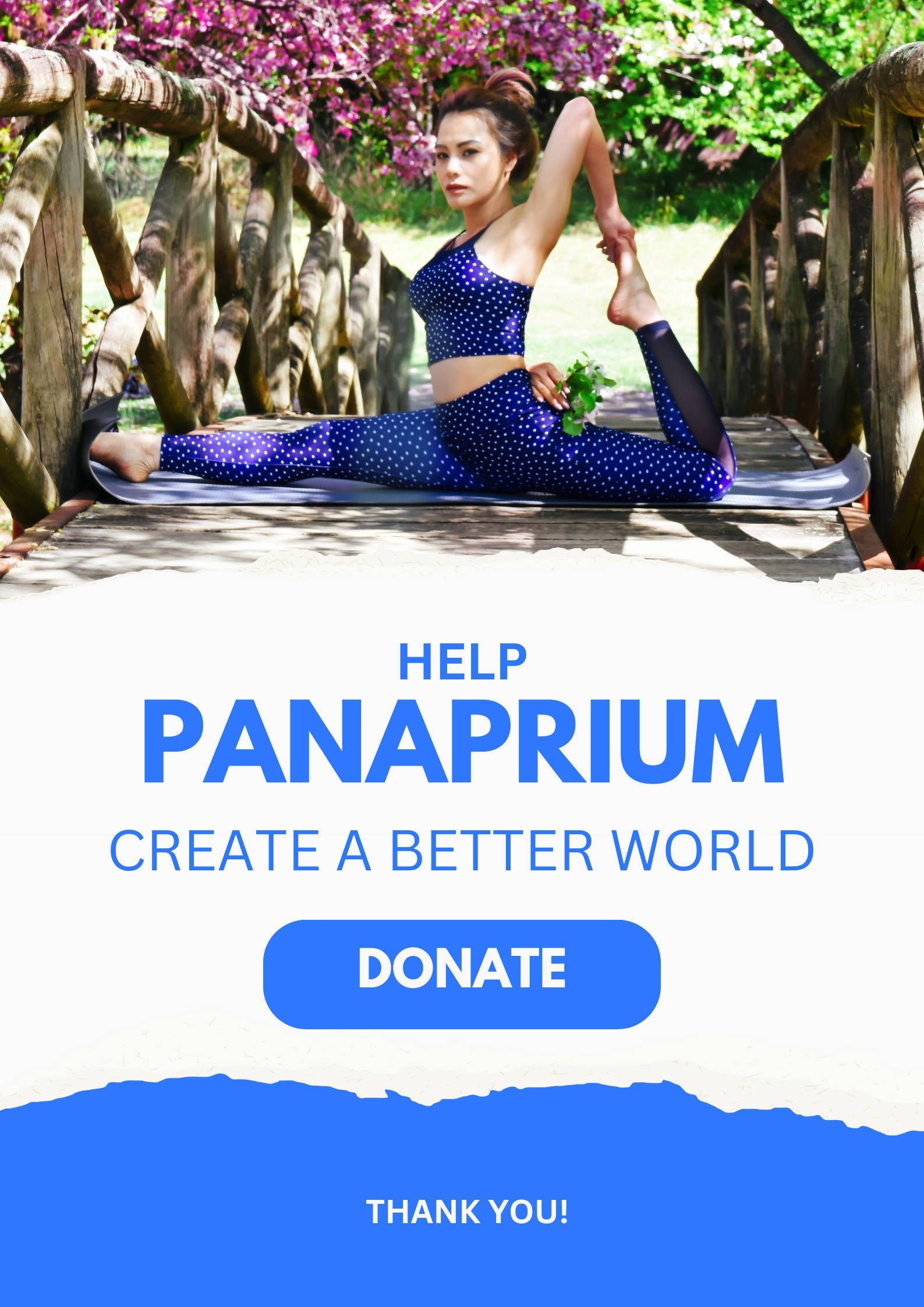
Cultiver des herbes aromatiques en pot est une façon pratique et enrichissante de conserver des saveurs fraîches à portée de main. Mais lorsque l'espace est limité, de nombreux jardiniers se demandent : peut-on cultiver différentes herbes aromatiques dans le même pot ? La réponse est oui, à condition de les associer judicieusement.
Tout comme au potager, certaines herbes aromatiques s'épanouissent en pot , tandis que d'autres peuvent se concurrencer ou entraver leur croissance. Dans ce guide, nous découvrirons quelles herbes aromatiques poussent bien ensemble dans un même pot, quelles associations éviter et des conseils pour créer un jardin d'herbes aromatiques harmonieux.
Panaprium est indépendant et pris en charge par les lecteurs. Si vous achetez quelque chose via notre lien, nous pouvons gagner une commission. Si vous le pouvez, veuillez nous soutenir sur une base mensuelle. La mise en place prend moins d'une minute et vous aurez un impact important chaque mois. Merci!
Pourquoi les plantes compagnes sont importantes pour les herbes en pots
Le compagnonnage végétal consiste à regrouper des plantes ayant des besoins similaires et des caractéristiques compatibles. En pot, cela est particulièrement important, car les herbes aromatiques doivent partager :
-
Lumière
-
Eau
-
Nutriments
-
Espace
Associer des herbes aromatiques aux conditions de culture similaires garantit l'épanouissement de toutes les plantes du pot. À l'inverse, des herbes aromatiques non compatibles peuvent entrer en compétition, lutter, voire inhiber leur croissance par la compétition racinaire ou des signaux chimiques (allélopathie).
Facteurs clés à prendre en compte lors du regroupement des herbes
Avant de combiner des herbes dans un seul récipient, tenez compte des points suivants :
1. Besoins en lumière du soleil
La plupart des herbes aromatiques aiment le plein soleil (6 à 8 heures par jour), mais certaines préfèrent la mi-ombre. Ne mélangez pas des herbes qui aiment le soleil et celles qui tolèrent l'ombre dans le même pot.
2. Besoins en arrosage
Certaines herbes aiment les sols humides (par exemple, le basilic, le persil), tandis que d'autres les préfèrent secs (par exemple, le romarin, le thym). Regroupez les herbes qui nécessitent un arrosage similaire.
3. Habitude de croissance et taille
Évitez la surpopulation. Associez les herbes compactes et ne plantez pas les plantes à croissance agressive (comme la menthe) avec les plantes fragiles.
4. Préférences de sol
Les herbes méditerranéennes se plaisent mieux dans un sol léger, sablonneux et bien drainé. D'autres préfèrent un sol plus riche ou légèrement humide.
Meilleures combinaisons d'herbes pour le même contenant
Voici des groupes d’herbes éprouvés qui fonctionnent bien ensemble dans le même pot, en fonction de besoins de soins similaires.
🌿 Mélange méditerranéen (herbes sèches et ensoleillées)
Idéal pour : Plein soleil, peu d'eau, sol bien drainé.
Herbes à combiner :
-
Romarin
-
Thym
-
Origan
-
Sage
-
Lavande (facultatif)
Pourquoi ça marche : Ces herbes sont originaires des climats méditerranéens. Elles apprécient toutes les conditions plus sèches, un ensoleillement important et un sol sablonneux. Leurs tiges ligneuses et leur croissance lente en font des plantes idéales en pot.
Conseil pour le contenant : utilisez un pot en terre cuite large et peu profond pour améliorer le drainage et imiter les conditions sèches.
🌱 Mélange hydratant (herbes tendres et feuillues)
Idéal pour : Mi-soleil à plein soleil, arrosage modéré, sol plus riche.
Herbes à combiner :
-
Basilic
-
Persil
-
coriandre
-
Cerfeuil
Pourquoi ça marche : Ces herbes aromatiques poussent dans un sol légèrement humide et fertile et se développent mieux avec un arrosage régulier. Leurs tiges souples et leur croissance rapide facilitent leur récolte.
Conseil pour le contenant : choisissez un pot plus profond pour soutenir leur système racinaire et aider à retenir l'humidité.
🌿 Mélange culinaire parfumé (Versatile Cook's Garden)
Idéal pour : Jardin en conteneur à usage général en plein soleil.
Herbes à combiner :
-
Basilic
-
ciboulette
-
Persil
-
Origan
Pourquoi ça marche : Si le basilic préfère un peu plus d'humidité, l'origan, le persil et la ciboulette supportent bien des conditions moyennes. Ces herbes aromatiques comptent parmi les plus utilisées en cuisine et constituent un excellent pot de terrasse pour une récolte fréquente.
Conseil pour le contenant : placez le basilic près du centre, car il pousse droit, et laissez les autres s'étendre vers l'extérieur.
🌿 Jardin d'herbes aromatiques pour les amateurs de thé
Idéal pour : mélanges de tisanes, soleil partiel, humidité modérée.
Herbes à combiner :
-
Mélisse officinale
-
Camomille
-
Menthe (dans un pot séparé si possible)
-
Fenouil (seulement si l'espace le permet)
Pourquoi ça marche : Ces plantes ont des propriétés apaisantes et sont populaires dans les tisanes maison. Elles préfèrent un sol humide et bien drainé, ainsi qu'une exposition partiellement ou totalement ensoleillée.
Conseil pour le contenant : la menthe est très envahissante. Plantez-la seule ou dans un petit pot séparé dans un contenant plus grand pour contrôler sa propagation.
Herbes que vous ne devriez PAS cultiver ensemble
Si certaines plantes font bon ménage, d'autres non. Voici quelques associations à éviter dans un même pot :
❌ Menthe + Toute autre herbe
-
La menthe pousse de manière agressive et envoie des stolons qui étouffent les autres plantes.
-
Solution : Plantez toujours la menthe seule ou dans un contenant enterré pour contrôler ses racines.
❌ Fenouil + La plupart des herbes
-
Le fenouil libère des composés qui inhibent la croissance des plantes voisines (allélopathie).
-
Solution : Gardez le fenouil dans son propre pot, loin du reste de votre jardin d’herbes aromatiques.
❌ Basilic + Rue
-
Ces herbes peuvent retarder la croissance de l’autre et ne sont pas compatibles.
❌ Aneth + Carvi ou Fenouil
-
Ces herbes peuvent se polliniser de manière croisée et se concurrencer chimiquement.
Tableau de plantations associées : qu’est-ce qui pousse bien ensemble ?
| Herbes compatibles | Couples incompatibles |
|---|---|
| Basilic + Persil | Basilic + Rue |
| Thym + Romarin | Romarin + Menthe |
| Origan + Sauge | Sauge + Ciboulette (peut concourir) |
| Coriandre + Cerfeuil | Coriandre + Fenouil |
| Camomille + Menthe (pots séparés) | Menthe + Tout ce qui se trouve dans le même sol |
Conseils sur la taille et la disposition des pots
Lorsque vous combinez des herbes dans le même pot, l'espace et la disposition comptent tout autant que la compatibilité.
👉 Utilisez la technique « Thriller, Remplissage, Spiller » :
-
Thriller : Grande herbe focale (par exemple, basilic ou romarin)
-
Remplissage : herbes aromatiques (par exemple, origan, persil)
-
Spiller : herbes traînantes (par exemple, thym, romarin rampant)
Non seulement cela est beau, mais cela aide également les herbes à pousser sans ombrager ni se surcharger.
Tailles minimales des pots :
-
Petit groupe (2–3 herbes) : 10–12 pouces de large
-
Groupe moyen (3–4 herbes) : 14–16 pouces de large
-
Grand groupe (5 herbes et plus) : 18 pouces de large et au moins 8 à 10 pouces de profondeur
Emplacement du soleil et de l'arrosage
-
Herbes de plein soleil (6 à 8 heures par jour) : basilic, romarin, thym, origan, sauge, lavande
-
Herbes à mi-ombre (4 à 6 heures/jour) : Menthe, persil, mélisse, cerfeuil
-
Tolérant à l'ombre (3 à 4 heures par jour) : coriandre (climats frais), ciboulette
Placez toujours les pots dans des endroits qui correspondent aux besoins de lumière collectifs des herbes à l'intérieur.
Considérations saisonnières
Les herbes varient en termes de durée de vie et d’habitudes de croissance :
🌱 Herbes annuelles :
-
Basilic, coriandre, aneth, cerfeuil
-
Peut nécessiter un remplacement ou une rotation après l'été
🌿 Herbes vivaces :
-
Romarin, thym, menthe, origan, sauge, ciboulette
-
Peut hiverner à l'intérieur ou dans des climats doux
Lorsque vous combinez des annuelles et des vivaces, sachez que le pot devra peut-être être réajusté chaque année.
Conseils d'engrais et d'entretien
-
Utilisez un engrais organique à libération lente une fois par mois.
-
Évitez de trop fertiliser : cela peut entraîner une croissance excessive des feuilles et une diminution de la saveur.
-
Taillez fréquemment les herbes pour favoriser une croissance plus touffue.
-
Retirez les fleurs (surtout sur le basilic et la menthe) pour prolonger la production de feuilles.
Réflexions finales : bien mélanger les herbes dans des contenants
Avec une bonne planification, vous pouvez cultiver plusieurs herbes aromatiques ensemble dans un même pot et profiter d'un jardin compact, parfumé et fonctionnel. L'essentiel est de regrouper les herbes selon leurs préférences en matière de lumière, d'eau et de sol , et de leur laisser suffisamment d'espace pour pousser sans être trop serrées.
Que vous fabriquiez une jardinière méditerranéenne, un pot d'herbes aromatiques ou un mélange pour rebord de fenêtre de cuisine, la plantation d'accompagnement dans des conteneurs vous permet de tirer le meilleur parti de votre espace, tout en ajoutant de la beauté et de la saveur à votre maison.
Résumé rapide : Meilleures associations d'herbes pour les contenants
| Thème du conteneur | Herbes à inclure |
|---|---|
| Mélange méditerranéen | Romarin, thym, origan, sauge |
| Mélange pour les amateurs d'humidité | Basilic, persil, coriandre, cerfeuil |
| Mélange de cuisine culinaire | Basilic, persil, ciboulette, origan |
| Jardinière pour herbes à thé | Mélisse, camomille, menthe (dans son propre pot) |
Cet article vous a-t-il été utile ? S'il vous plaît dites-nous ce que vous avez aimé ou n'avez pas aimé dans les commentaires ci-dessous.
About the Author: Alex Assoune
Contre Quoi Nous Luttons
Les groupes multinationaux surproduisent des produits bon marché dans les pays les plus pauvres.
Des usines de production où les conditions s’apparentent à celles d’ateliers clandestins et qui sous-payent les travailleurs.
Des conglomérats médiatiques faisant la promotion de produits non éthiques et non durables.
De mauvais acteurs encourageant la surconsommation par un comportement inconscient.
- - - -
Heureusement, nous avons nos supporters, dont vous.
Panaprium est financé par des lecteurs comme vous qui souhaitent nous rejoindre dans notre mission visant à rendre le monde entièrement respectueux de l'environnement.
Si vous le pouvez, veuillez nous soutenir sur une base mensuelle. Cela prend moins d'une minute et vous aurez un impact important chaque mois. Merci.































0 commentaire